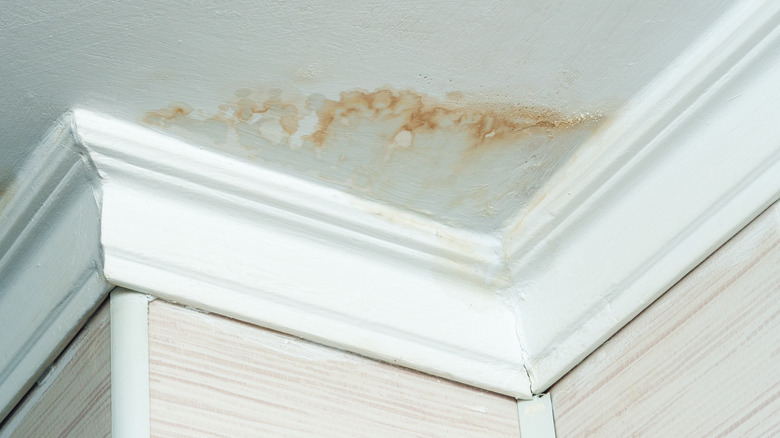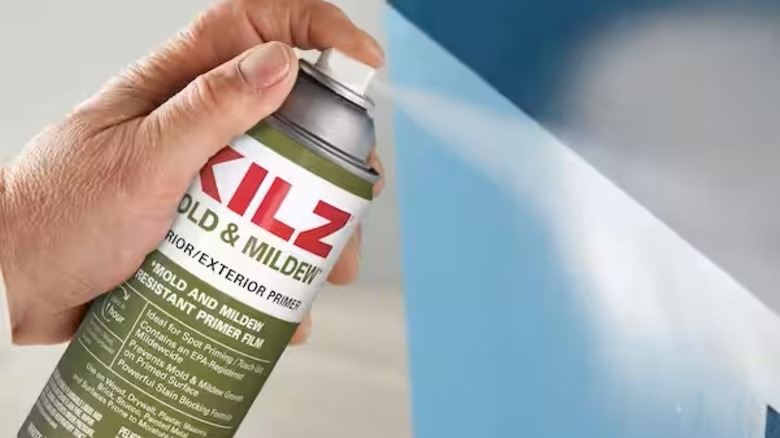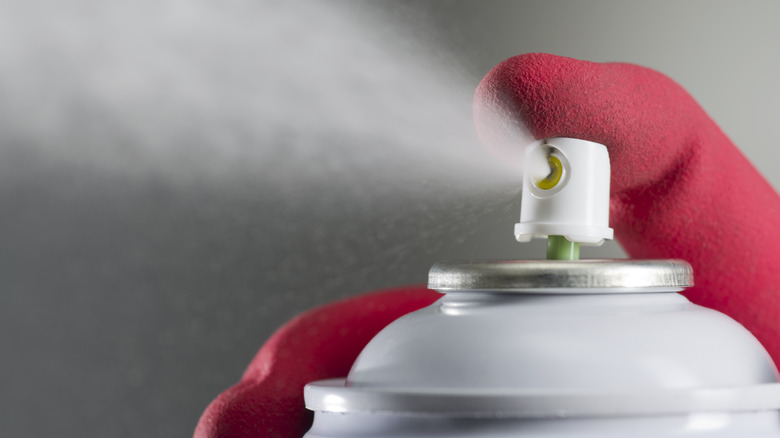The Best Type Of Primer To Use When Covering Up Nasty Brown Water Stains
We may receive a commission on purchases made from links.
When renovating a home, especially one that's suffered some water damage, stains are a concern. The drywall may completely dry through, and with proper cleaning, there's no mold on the surface. Yet, painting over those ugly brown water stains is very hard since most water-based primers don't hold enough weight to cover the dark color properly. Instead of multiple coats and frustrating steps, consider switching to an oil-based aerosol paint primer instead. If you have, for example, discoloration on the ceiling from a leak in a bathroom above, use this paint as a fast, reliable solution. Remember, you'll use this as a primer, meaning you'll still need to paint over it to create a cohesive, even look across the surface.
You can purchase paint primer like this at most home improvement stores, such as Home Depot, which carries Kilz Mold and Mildew Oil-Based Primer for $13 — and once you do, you'll wish you used it before. There are other types of oil-based primers, including those that paint on with a brush. These can work well in some areas, especially when there's significant staining of the drywall. However, it's time-consuming, and it can be expensive for a few small spots. The better alternative is an aerosol paint that goes on with a few sprays and leaves you with a finish that's free from the stain. You can then follow this up with a fresh coat of paint over the top, creating a like-new look in no time.
Why an oil-based paint in a spray can works better
Oil-based stains provide better coverage for many surfaces, including for covering up more prominent stains. When you have rust-colored water stains on your ceiling or drywall, you need an oil-based primer to hide it well. They can also help to cover discoloration from mold (that you've properly treated) and even nicotine. You typically don't need to apply numerous applications of this paint to get the stain coverage you're after. That's a time saver. One key factor to consider is good ventilation. Many oil-based primers have volatile organic compounds in them, more commonly referred to as VOCs, which are toxic. Good ventilation helps with this. The alternative is to use a product specifically designed to be non-VOC and an oil-based primer. Though not as commonly available, some products exist. You can buy Rust-Oleum Corporation's Odorless Oil-Based Blocker Primer for about $9 on Amazon, for example.
The aerosol can lends itself to some simple benefits, too. The spray works well as a quick application method (no brushes needed) and creates an even layer over the surface. As a result, instead of painting on a thick layer of primer, you're only applying a small amount needed to cover the stain. The result is that the stain is gone, and the paint dries quickly. The paint in these cans also does a good job of adhering to the surface of the wall and is less likely to drip.
How to apply oil-based primer to cover unsightly water stains
An oil-based primer is typically sold with other spray-can paints, but you'll need to look specifically for a product labeled as oil-based. Most other stain-blocking primers don't offer the same level of coverage. Then, read and follow the manufacturer's directions for use. While this can change from one to the next, these products are generally easy to use. Testing the spray in a hidden area before applying it to a larger space is a good idea.
Start by cleaning the surface. It shouldn't be damp. If it is, clean the surface using some bacteria- and mold-killing product, like Moldex Mold Killer, sold at Home Depot for about $8. Then, apply a fan or allow the drywall to dry before priming it. Once you're ready to do so, hold the can about a foot from the surface of the wall and use a back-and-forth, sweeping motion to apply the paint to the area. Don't hold the can in one place for very long, and overlap one swipe slightly with the next. However, as an oil-based product, it's easy to apply too much. Instead, move over the area quickly to create a light coat. You can always apply a second coat of primer later. If you do need a second coat, wait at least 5 minutes before reapplying, and apply the primer at least 30 minutes before the application of the actual paint.


